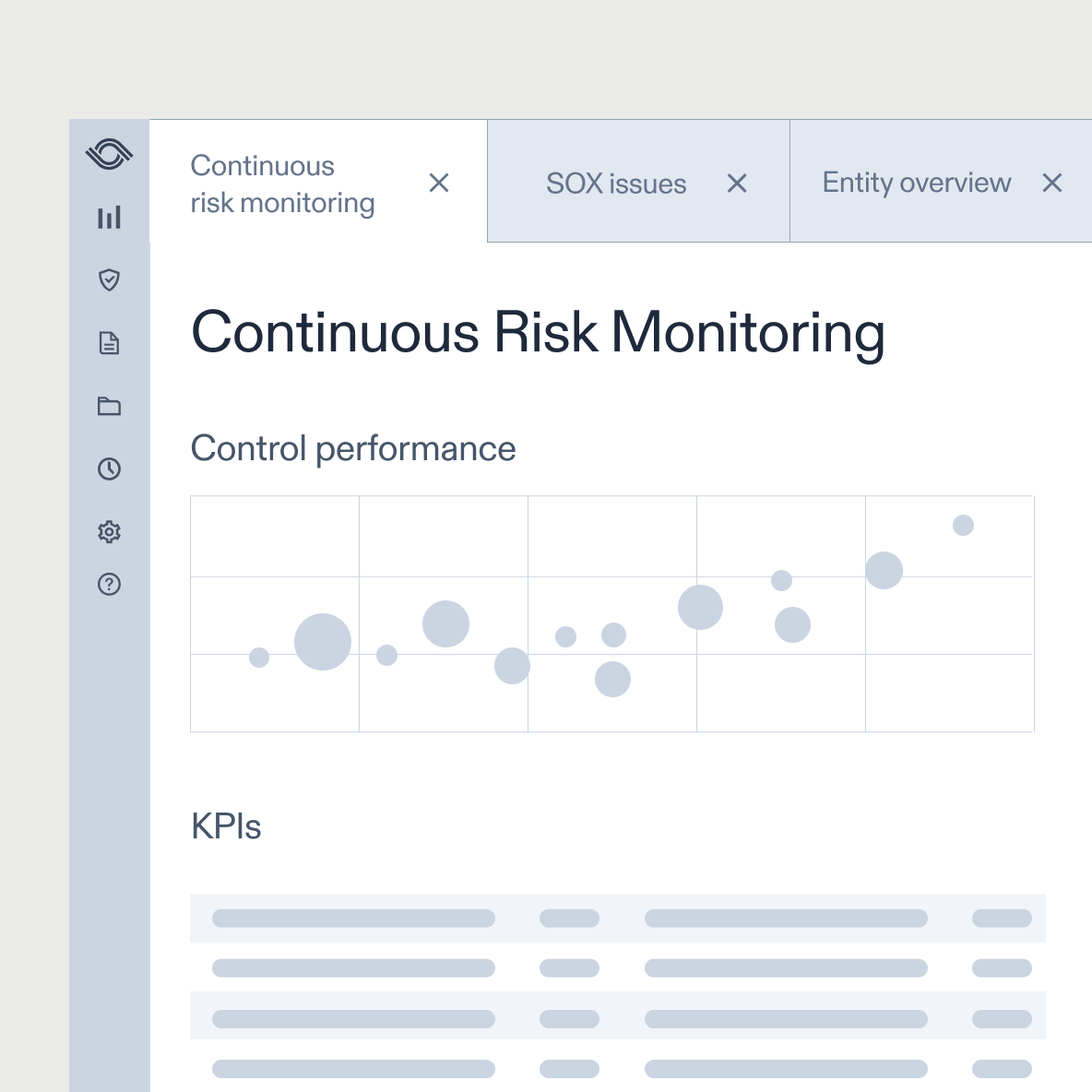
October 3, 2025 • 19 min read
The GDPR compliance framework: What you need to know in 2025

Saulo Consalter
In 2011, a single lawsuit against Google for scanning emails sparked distrust and privacy concerns. European regulators recognized that the internet had transformed into a "Data Hoover" — collecting, processing, and monetizing personal information at an unprecedented scale. Their 1995 Data Protection Directive was no longer enough.
What followed was years of deliberation, drafting, and debate that culminated on May 25, 2018, when the General Data Protection Regulation went into effect. This wasn't just another regulatory update. The GDPR fundamentally shifted how organizations worldwide must think about data privacy, imposing fines of up to €20 million or 4% of global revenue — whichever is higher.
In this article, we'll explain GDPR, how it works, and why it matters for IT and compliance managers in 2025.
What is GDPR and why does it matter?
The General Data Protection Regulation is the world's most comprehensive data privacy framework. The framework regulates how you collect data and think about data relationships.
The most interesting part is its reach beyond just the European Union. It applies to any organization that processes the personal data of individuals residing in the EU. If your systems process the personal data of individuals located in the EU in any capacity — whether through direct sales, website analytics, or even employee records — you're operating within GDPR's jurisdiction.
The 7 core principles of GDPR
The seven core principles form the backbone of everything you'll build:
- Lawfulness: Establishing valid legal grounds for data processing
- Fairness: Not processing data in ways that are unduly detrimental, unexpected, or misleading to individuals
- Transparency: Clear, honest communication about your data practices from the very beginning
- Purpose limitation: Collecting data only for specified, explicit, and legitimate purposes
- Data minimization: Processing only what's necessary for your stated purposes
- Accuracy: Keeping personal data accurate and up to date
- Storage limitation: Retaining data only as long as needed for specified purposes
- Integrity and confidentiality: Implementing appropriate security measures
- Accountability: Demonstrating compliance with all these principles
When you understand who needs to comply with GDPR, it eliminates the first major blind spot. GDPR’s scope of applicability comes only under two primary conditions:
- Establishment criteria: If you have any establishment in the EU (even a single employee or contractor), you're subject to full GDPR requirements.
- Targeting criteria: If you process data related to goods or services offered to EU individuals, even if it doesn't involve financial transactions, GDPR applies (this includes free services, newsletter subscriptions, or any form of behavioral monitoring through cookies or analytics).
What are the key components of the GDPR framework?
GDPR focuses on five critical areas that form the foundation of everything you build. Here's what it focuses on:
1. Data processing records
Article 30 of GDPR mandates that you maintain comprehensive records of processing activities. The main goal is to create a detailed map of all personal data within your organization. These records serve as your primary defense during regulatory inspections and audits.
For example, you need the name and contact details of the data controller, data protection officer, and any representatives. You should also document the purposes of processing, categories of data subjects, and types of personal data involved. Include categories of recipients who have received or will receive the data, details of any international transfers, retention periods, and descriptions of your technical and organizational security measures.
2. Consent and legal basis
GDPR provides six legal bases for processing personal data, and understanding when to use each prevents major compliance failures. They are:
- Consent
- Contract necessity
- Legal obligations
- Vital interests
- Public tasks
- Legitimate interests
If you have to be compliant under GDPR, consent has to meet these four criteria:
- It must be freely given, meaning no imbalance of power influences the decision.
- It must be specific to particular purposes, which means blanket consent doesn't work.
- It must be informed with clear information about processing activities.
- It must be unambiguous, requiring a clear affirmative action from the data subject.
3. Data subject rights
GDPR grants every individual eight rights that directly impact your system architecture and operational procedures, which include:
- Right to access: Individuals can obtain copies of their personal data and information about how it's processed
- Right to rectification: Correct inaccurate data promptly
- Right to erasure: Delete data in specific circumstances (exceptions exist for legal compliance or legitimate interests)
- Right to restrict processing: Temporarily limit data use while disputes are resolved
- Right to data portability: Provide data in structured, machine-readable formats when technically feasible
- Right to object: Stop processing for direct marketing or when based on legitimate interests
- Rights related to automated decision-making: Protection against purely automated processing with significant effects
- Right to withdraw consent: Must be as easy as giving consent initially
4. Governance and accountability measures
Some of the core governance requirements include:
- Privacy by design and default: Data protection considerations should be integrated at every stage of system development and business process design.
- Breach notification: Notify supervisory authorities within 72 hours of becoming aware of a breach — especially ones that are likely to risk individual rights and freedoms — and notify affected individuals when the risks are high.
- Documentation requirements: You need to maintain breach registers and remediation measures, where the initial notifications are just one part of the report.
5. Data transfers outside the EU
International data transfers require specific safeguards to maintain GDPR-level protection. Let's say you have to share data with a provider outside of the EU. If the EU finds the country's data privacy laws "adequate," you can share it without needing extra contracts or clauses.
What are the operational requirements under GDPR?
Here are a few things to keep in mind when making GDPR an ongoing operational process rather than a one-time event:
- Transparent data processing: You have to identify and document your lawful basis for processing personal data before data collection begins. For example, if you're collecting email addresses for a newsletter, you need consent; if you're processing employee data for payroll, you can rely on contract necessity.
- Data mapping and documentation: Maintain detailed records of all data processing activities under Article 30 requirements. Think of this as creating a comprehensive inventory of your data ecosystem. You need to document what personal data you collect (names, emails, IP addresses), why you collect it (marketing, customer service, analytics), who receives it (third-party vendors, partners), and how long you keep it.
- Security and risk management: You need to consider implementing technical measures, including encryption (protecting data in transit and at rest), access controls (only authorized personnel can access personal data), and backup systems. Also, you have to implement measures for staff training, clear data handling policies, and limit data access based on job requirements.
- Data Protection Officers (DPOs): Appoint DPOs with expertise, independence, and direct access to senior management. It’s required when you engage in large-scale systematic monitoring, process special categories of data extensively, or operate as public authorities.
- Data Protection Impact Assessments (DPIAs): Conduct DPIAs for processing activities that could result in high risks to individual rights and freedoms. They help you identify and mitigate risks before they impact individuals. Some of the required scenarios include systematic monitoring (like extensive CCTV systems), processing special categories of data extensively (health records, biometric data), or using new technologies with unclear privacy implications (AI-powered analytics, facial recognition).
- Supporting data subject rights: You have to respond to requests within one month, so you need the necessary infrastructure to do that. For example, when someone requests access to their data, you need systems that can quickly locate their information across all databases.
- Third-party risk management: Only engage data processors and vendors to guarantee GDPR-level protection. This means conducting due diligence on their security practices, including mandatory contract clauses under Article 28, and monitoring ongoing compliance. For example, if you use a cloud storage provider, they must have appropriate security measures and can only process data according to your documented instructions.
- International data transfers: Implement legal mechanisms for transferring personal data outside the European Economic Area. Options include adequacy decisions (like transfers to countries the EU considers "adequate"), Standard Contractual Clauses (contractual protections), or Binding Corporate Rules (for multinational organizations).
- Continuous employee training: Provide regular privacy training for all staff handling personal data. Your training sessions should be role-specific and cover GDPR principles, your organization's policies, individual responsibilities, and consequences of non-compliance.
What are the common pitfalls in GDPR compliance?
Even when you have the best intentions to adhere to GDPR requirements, there are many ways in which you could slip. Here are the three common obstacles we’ve seen hinder organizations:
1. Incomplete data mapping
It’s common for internal teams to underestimate the complexity of their data ecosystems. As a result, you get incomplete visibility into processing activities. You can’t protect what you can’t see, and regulators consistently find that inadequate data mapping underlies most major compliance failures.
Teams focus on obvious data stores like customer databases, email systems, and marketing platforms. But they miss shadow IT applications, archived data, backup systems, and third-party integrations — for example, employee laptops, mobile devices, and cloud storage accounts.
So, map your data across all systems to find personal data wherever it exists.
2. Overreliance on legal without operational support
When your legal teams own privacy compliance without meaningful integration with IT, security, and business operations, you’ll create dangerous gaps between policy and practice.
Legal teams understand regulatory requirements — but they don't understand operational constraints. Their draft requirements sound compliant but don't work in reality. On the other hand, IT teams see these requirements but don't see the reason behind them, which makes it hard to comply.
In reality, both teams need to cooperate so there's a legal and operational backing behind every compliance-related decision.
3. Ignoring other data protection laws
If you focus exclusively on GDPR while ignoring other privacy regulations, you'll create fragmented compliance programs that become increasingly difficult to manage. For example, state-level privacy laws in the US or sector-specific regulations like HIPAA have overlapping or specialized requirements that use the same dataset.
Understand why you need to comply with GDPR and where other regulations might be necessary. Only then can you take a connected approach to complying with different regulations.
How AuditBoard supports your GDPR compliance efforts
To truly become GDPR-compliant, you need the operational systems to help you build risk and compliance programs that can scale with your organization’s complexity. AuditBoard helps with all of that — and more.
Here’s how:
Connected risk platform that unifies privacy, data security, and compliance data across your entire organization
GDPR intersects with multiple organizational functions.
But if your privacy requirements live in one system, security controls in another, and audit findings scattered across who knows how many spreadsheets, you're manually trying to connect the dots between all these moving pieces.
AuditBoard's unified data core connects privacy, security, audit, risk, and compliance data in a single platform.
The platform also automatically maps evidence requests to your controls and frameworks, so one document can satisfy multiple requirements. As a result, stakeholders get automated notifications based on actual control timelines. They see clear dashboards showing what's needed and when. As testing gets completed, approvals flow through automatically.
When security teams implement new access controls, those changes automatically update privacy assessments. When audit findings identify deficiencies, the platform links those issues to related privacy risks.
This is great for GDPR because privacy requirements touch every aspect of data handling. Data protection impact assessments pull real-time information about security measures and retention policies.
Real-time monitoring and reporting capabilities that keep your GDPR program audit-ready
Traditional compliance approaches that rely on annual reviews are not enough for GDPR. You need continuous monitoring, especially when regulators can show up asking for current documentation.
AuditBoard provides real-time visibility into your compliance status. You get access to:
- Control effectiveness tracking
- Emerging risk identification
- Current documentation across all your processing activities
It all updates continuously based on actual testing results and risk assessments.

Continuously monitor risks within your organization using AuditBoard (Source)
Your processing records reflect what's happening in your environment right now. When new data flows get implemented, the platform detects changes and prompts the appropriate privacy assessments automatically.
When you need audit-ready documentation, you generate it on demand instead of scrambling for weeks before an inspection.
Leverage AuditBoard’s compliance framework library
GDPR is just one of the many out-of-the-box frameworks available in AuditBoard’s library. The library gives customers easy access to frameworks and supports automated mapping through a common control set within our IT Compliance solution.
From day one, you can onboard the GDPR framework into your compliance program, seamlessly connect it with existing risks and controls across the organization, and quickly launch a remediation plan driven by exceptions.
Take a connected risk approach to GDPR compliance
GDPR works best when you treat it as an integrated business function rather than a legal checklist.
AuditBoard's connected risk platform enables this by unifying the data, workflows, and collaboration tools that make GDPR compliance sustainable. Instead of managing privacy as a separate compliance exercise, you can embed privacy considerations into your broader risk management and operational governance programs.
At the moment, nearly 50% of Fortune 500 companies trust AuditBoard for their complex compliance requirements. They report 83% more efficient control mapping, 63% more efficient real-time data reporting, and 50% better stakeholder engagement.
If you want to support your GDPR program with workflows that align risk, legal, and infosec, book a demo to see how AuditBoard can help.
About the authors

Saulo is a Partner Development Manager for EMEA at AuditBoard, bringing over 18 years of experience in guiding organizations to implement leading GRC and Internal Audit practices. He specializes in helping businesses across various industries meet critical regulatory standards, including IFRC, SOX, and the UK Corporate Governance Code. Previously, Saulo served as the Head of Security and Information Governance at National Grid.
You may also like to read


Beyond the compliance checklist: Risk-driven cyber GRC

Connected risk: The AI-driven convergence of audit, risk, and compliance

What to look for in modern IT risk management software

Beyond the compliance checklist: Risk-driven cyber GRC

Connected risk: The AI-driven convergence of audit, risk, and compliance
Discover why industry leaders choose AuditBoard
SCHEDULE A DEMO



